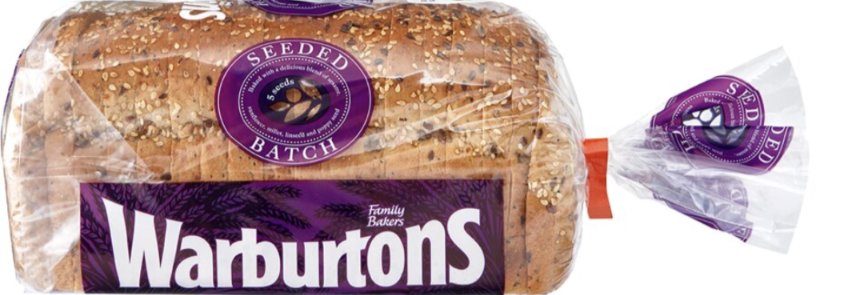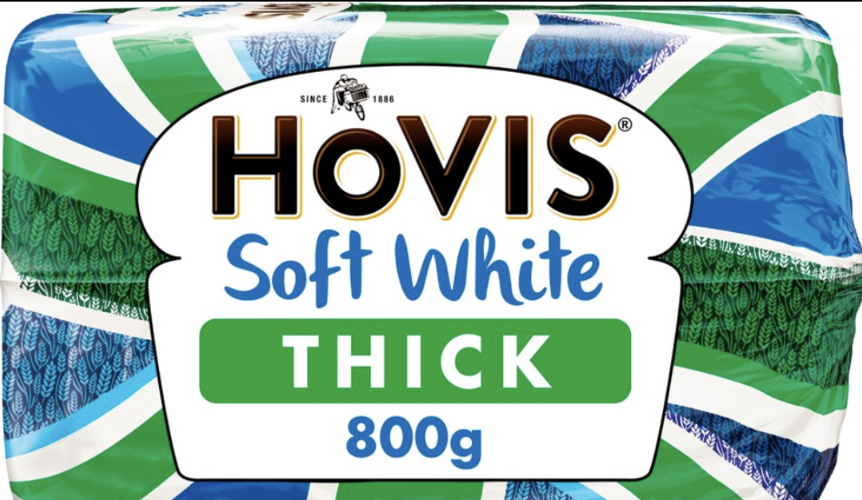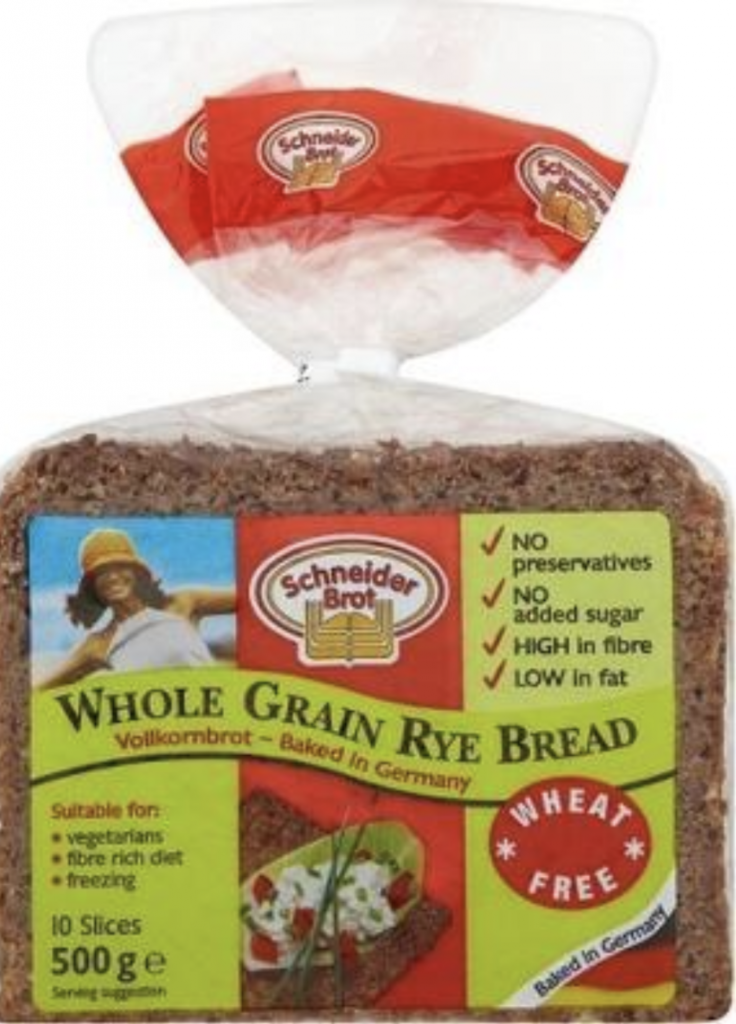As discussed in previous newsletters ultra-processed food is at the root of much of our ill health – with the highest consumers 24 per cent more likely to suffer heart attacks and strokes, and 39 per cent more likely to develop high blood pressure.
As my PT clients will know I have been encouraging you all to remove bread from your diets and now my campaigning has been backed upped as researchers are now labelling bread – the backbone of the British diet – as an ultra-processed food, or UPF. This means it has been industrially manipulated to be a long way from the initial raw ingredients, and generally contains additives including preservatives, emulsifiers and stabilisers – which you couldn’t buy in your local supermarket. Could this be the worst thing since sliced bread?
More than eight in 10 loaves we buy come from the supermarket, sliced and in a plastic bag – packaging which in itself is significant according to Dr Chris van Tulleken, the author of Ultra-Processed People: the Science Behind Food that isn’t Food. Van Tulleken defines UPF as, “products wrapped in plastic which contain at least one additive you don’t find in a domestic kitchen” – which, on the surface of it, includes our humble supermarket loaf.
Not all bread counts as UPF. A loaf containing just flour, salt, and yeast is simply “processed” and processed food isn’t such a big problem. Many of the expensive sourdoughs fit into this category. However, most of us don’t want to shell out a fiver for our daily bread, nor can we afford it. So what does this mean for the rest of us, who’ve spent decades buying bread, assuming it to be a healthy choice?
I have reviewed a selection of bread loaves using the “YUKA” app which details the ingredients and what they do to your body. This app also provides a percentage score on how healthy your food is for you! But first a little background on how bread has changed in the UK.
Changing Bread
Having just returned from a holiday in Europe it is very clear the bread abroad is fundamentally different than the UK loaf! A good taste, texture and no bloated feeling after makes bread abroad enjoyable but why? and is it as healthy as it tastes?
The Real Bread Campaign believes that everyone has the right to choose to eat Real Bread, that is to say: made without the use of any so-called processing aids or other artificial additives. This campaign was formed following Brexit and the implementation of a law in the UK that requires the mandatory addition of four ‘token’ nutrients to most UK-milled flour. This law all but denies people in Britain the right to eat “real bread”. Effectively it leaves most of us with two options: Real Bread made with wholemeal flour or not eating bread at all.
Flour is categorised by the way it is extracted from the grain. The extraction rate being the percentage by weight that is ‘extracted’ from the whole grain to make flour. In theory, whole wheat flour contains 100% of the cleaned whole grain; contemporary brown flour is around 80-85% extraction and white flour is about 70-72% extraction. In traditional milling, as the whole grain is crushed together and then sifted to get lighter flours, even white flour will contain particles of the more nutritious germ and fibrous outer layers. In the modern UK milling process, however, the different parts of the grain are separated very efficiently, so 70% extraction white flour is almost pure endosperm and will contain much lower amounts of the nutrients that are concentrated in the germ and outer layers of the grain than stone ground flour of an equivalent extraction rate. This reduced nutrient value at one time encouraged the addition of chalk to bread or flour but this was officially recognised as adulteration and banned by law. Today the law makes its addition mandatory for the majority of flour and loaves sold in the UK. According to The Bread and Flour Regulations 1998: calcium carbonate (chalk), iron, thiamin (vitamin B1) and nicotinic acid or nicotinamide must be added to all wheat flour sold or consumed in the UK (including stoneground, organically produced and imported). Effectively, this means that you cannot buy additive-free white, brown (including multigrain, malthouse, wholegrain, Granary etc.) wheat flour, bread or industrial loaf products in the UK. Your only chance is wholemeal – but read the label to check the manufacturer hasn’t chosen to add anything voluntarily… NB. The regulation only applies to wheat flour. It does not apply to flour milled from any other grain/food – eg rye, barley, oats, coconut, potato, rice, millet, teff, gluten-free flours etc.
So should we be avoiding the sliced loaf altogether? Absolutely not, says dietitian Clare Thornton-Wood of the British Dietetic Association. While she agrees that freshly made food is better, in the end, it’s all about balance. “Bread is good for you,” she says. “It’s a source of fibre, calcium and B vitamins. A wholemeal sourdough might be a great choice, if possible, but otherwise go for something that’s got a variety of grains and maybe some seeds for added nutrients and fibre.” So how does your regular supermarket loaf measure up? Below I have sampled some bread from local supermarkets and analysed their ingredients and effect on the body.
1) Warburtons Seeded Batch
You would think this seeded bread would be good for you and score high. It has excellent protein and fibre levels, low in Saturated fats and sugar too, however a deeper look at it shows a bit too much salt and a list of additives that would scare most!
The Mono- diacetyltartaric and mono- diglycerides of fatty acids ( which both just sound horrific) are used to maintain the texture of the product. These emulsifiers are believed to disrupt our intestinal flora increasing the risk of auto-immune disorders, allergies and inflammatory diseases. In recent studies this has been found to promote the development of colon cancer
This bread also has Sodium Stearoyl Lactylate, This texturizing agent has the ability to alter your gut microbiota composition, something to avoid.
This bread scored just 60%
2) Jason’s Sourdough – The Great White (brought from Tesco)
Sourdough is typically a healthier option when it comes to breads as explained above
This particular loaf comes with excellent protein, some fibre, low in Saturated fats, sugar and salt. It only has 2 additives – Calcium Carbonate (Chalk) and Niacin. The later is used to slow down the oxidation reaction of the bread allowing it to last longer and is thought to be of no risk to humans. The Calcium Carbonate is extracted from limestone, it has been found to accumulate in the body of some people, but the long term effects are still widely unknown.
This bread scored 84% to be one of the top loaves!
3) Hovis – Best of Both
This bread has had great marketing. “It is the best of both” but a deeper look shows it might have excellent protein and fibre, as well as, low saturates, sugar and salt. But this loaf contains as many as 7 additives, including Mono- diacetyltartaric and mono- diglycerides of fatty acids listed above. In addition, it has Calcium Sulphate a anticaking agent which at high doses may lead to digestive disorders and Calcium propionate, which extends the products shelf-life but recent studies have shown to impact certain metabolic parameters such as glucagon levels in the body.
This bread scored just 60%, definitely one to avoid.
4) Hovis Soft white
A very popular bread available in most supermarkets and stores.
It comes with excellent protein and low saturated fats, sugar and salt. There is some fibre in this loaf too but it’s the additives again that bring this bread down. It contains the usual suspects from other Hovis bread (as above) but this this loaf also has Sodium Steroyl Lactylate used to modify the breads texture. This can alter guts microbiota composition when the acceptable daily intake is exceeded especially in children.
Another 60% score and another bread to avoid.
5) COOP White Sourdough
The most local shop to Enjoy Fitness Studio, so we thought we had better test one of their loaves.
This is a sourdough, so already the flour has been processed less before bread manufacture, which helps. This loaf has excellent fibre, with low saturated fat, Salt and sugar. The 3 additives Listed in the ingredients, all help with slowing down the oxidation of the bread, and all of which are of limited risk to humans.
Another 84% score, shows the Sourdough leads the way.
6) Brother Whole Grain Rye Bread
A bit different this one, this particular loaf was purchased from Waitrose and is a different taste and texture from normal bread. Definitely an acquired taste. It is fairly healthy though, excellent fibre and some protein. It has low Saturated fats and sugar. It is let down only by its high salt content as there are no additives at all in this product.
Another high 84% score for this one.
7) Wholemeal Farmhouse Bread Waitrose
Our first wholemeal review shows this type of bread has excellent Protein levels as well as Fibre. It is low in Saturated fat and sugar however this particular manufacturer has decided to add the voluntarily add the calcium Carbonate, Niacin and Ascorbic Acid compulsory in other breads. The addition of extra salt also marks this bread down to 69%
More loaves will be added to this story as they are sampled, so please pop back again to see the comparisons. Many thanks









